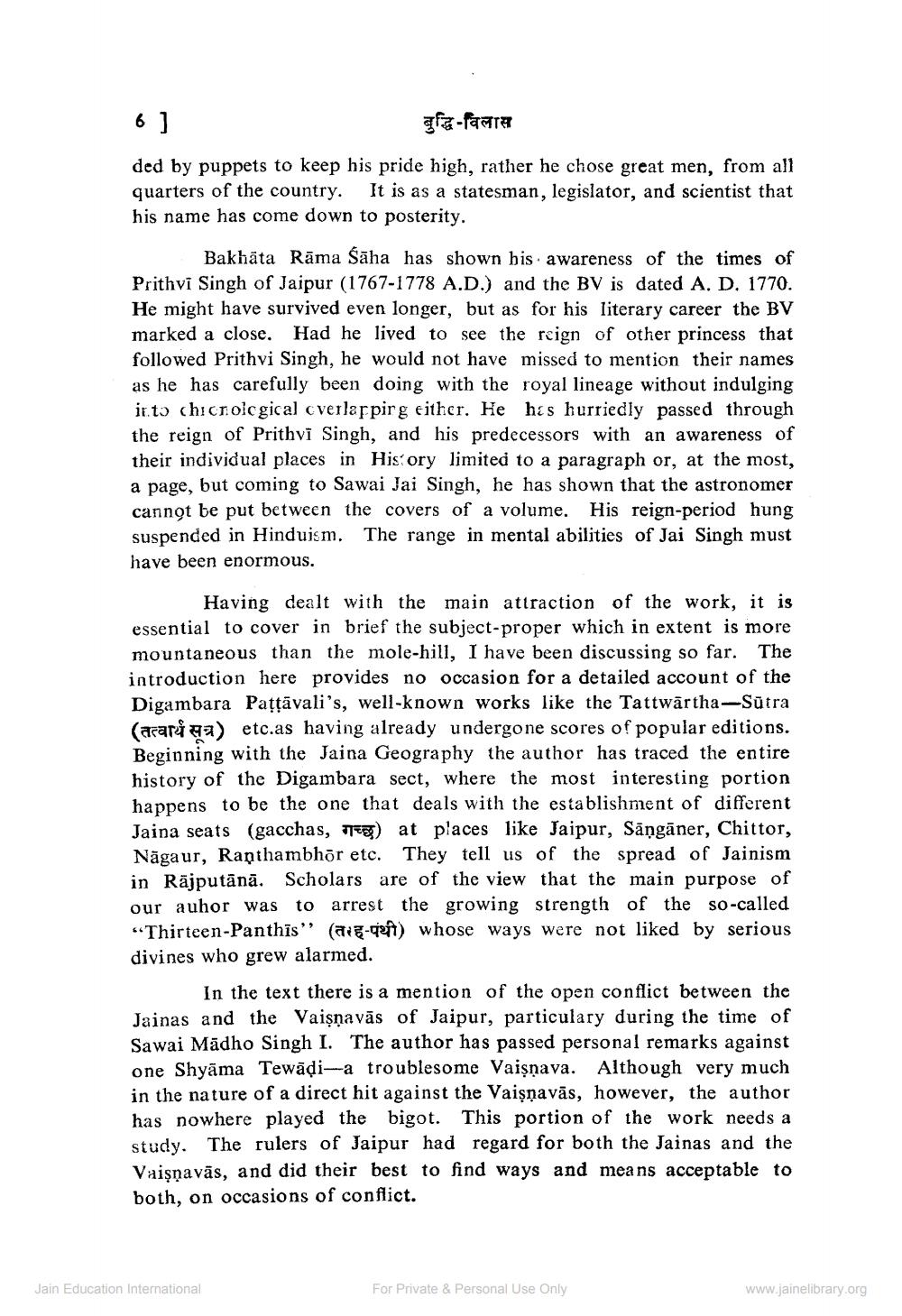________________
6 ]
gfa-fara
ded by puppets to keep his pride high, rather he chose great men, from all quarters of the country. It is as a statesman, legislator, and scientist that his name has come down to posterity.
Bakhāta Rāma Šaha has shown his awareness of the times of Prithvi Singh of Jaipur (1767-1778 A.D.) and the BV is dated A. D. 1770. He might have survived even longer, but as for his literary career the BV marked a close. Had he lived to see the reign of other princess that followed Prithvi Singh, he would not have missed to mention their names as he has carefully been doing with the royal lineage without indulging into chronological overlapping either. He has hurriedly passed through the reign of Prithvi Singh, and his predecessors with an awareness of their individual places in History limited to a paragraph or, at the most, a page, but coming to Sawai Jai Singh, he has shown that the astronomer cannot be put between the covers of a volume. His reign-period hung suspended in Hinduism. The range in mental abilities of Jai Singh must have been enormous.
Having dealt with the main attraction of the work, it is essential to cover in brief the subject-proper which in extent is more mountaneous than the mole-hill, I have been discussing so far. The introduction here provides no occasion for a detailed account of the Digambara Paṭṭāvali's, well-known works like the Tattwartha-Sutra (arara) etc.as having already undergone scores of popular editions. Beginning with the Jaina Geography the author has traced the entire history of the Digambara sect, where the most interesting portion happens to be the one that deals with the establishment of different Jaina seats (gacchas, ) at places like Jaipur, Sanganer, Chittor, Nagaur, Ranthambhor etc. They tell us of the spread of Jainism in Rajputānā. Scholars are of the view that the main purpose of our auhor was to arrest the growing strength of the so-called "Thirteen-Panthis" (a) whose ways were not liked by serious divines who grew alarmed.
In the text there is a mention of the open conflict between the Jainas and the Vaiṣṇavās of Jaipur, particulary during the time of Sawai Madho Singh I. The author has passed personal remarks against one Shyama Tewaḍi-a troublesome Vaisnava. Although very much in the nature of a direct hit against the Vaiṣṇavās, however, the author has nowhere played the bigot. This portion of the work needs a study. The rulers of Jaipur had regard for both the Jainas and the Vaiṣṇavās, and did their best to find ways and means acceptable to both, on occasions of conflict.
Jain Education International
For Private & Personal Use Only
www.jainelibrary.org




